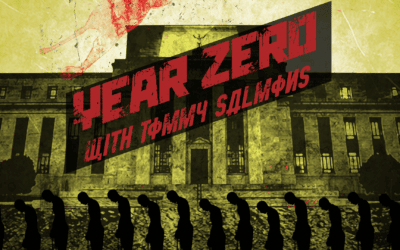In the lead up to the 2016 election, Candidate Trump talked a somewhat sensible policy on Syria. He wanted to end the support of rebels, and he preferred Assad to the jihadists, he desired to work with the Russians to achieve the shared goal of “knocking the hell out of ISIS.”
President Trump started out his reign with a similar policy to the one Candidate Trump laid out. In early February, Trump froze, then later ended the CIA program of arming Syrian rebels. Under Obama, this program fueled the jihadist gains in the Syrian Civil War. A 2012 DIA memo forewarned that the CIA program of arming jihadists could create an Islamic Caliphate. A recent report reveals that US weapons went from the hands of “moderate” rebels to jihadists in two months.
President Trump continued Obama’s air war against ISIS in both Syria and Iraq. Under Trump, the US military has increased the number of airstrikes. Trump’s airstrikes have also caused an increase in the number of civilian casualties. The Trump administration targeted civilian targets including schools, mosques, and medical facilities.
In March, Trump started to face the complexity of the situation in Syria, moving US Army troops to Manbij to keep US-NATO ally Turkey from killing the US-supported Syrian Democratic Forces. Turkey labels the SDF a terror group and the SDF is principally made up of Syrian Kurdish fighters. The US also deployed 400 Marines to Syria to help the SDF take Raqqa.
While the Pentagon has been deceptive when announcing troops levels in Syria, Recent reporting suggests the US had a peak of about 2,500 troops in Syria during the invasion of Raqqa.
By late March, top US diplomats were signaling Trump had abandoned Obama’s “Assad must go policy.” That changed on April 4th when an alleged chemical weapons attack occurred in Khan Sheikhoun. The Trump administration quickly accused Assad of carrying out the attack and shifted policy back to “Assad must go.” By April 7th, Trump was using his daughter’s tears as justification to launch 59 cruise missiles at a Syrian airbase.
Philip Giraldi reported, at the time of the missile attack, that there was skepticism in the intelligence community as to who was responsible for the chemical weapons attack. MIT professor Theodor Postol wrote several papers disputing claims that Assad carried out the attack. Seymour Hersh would later write the definitive report debunking the US claim that Assad carried out a chemical weapons attack.
Trump did not resume bombing Assad forces until mid-May. The US targeted an Assad allied militias who were chasing after retreating Islamic State forces across the Syrian Desert.
The US claimed that the air strikes was to protect US forces stationed at a border crossing many miles away. The US could have been attempting to slow the Syrian Army’s push towards Deir Ezzor and the lucrative oil and gas fields that surround the city.
Pundits and think tanks have also suggested that the US needed to prevent the Syrian Army from reaching the border with Iraq. They argue that this would form a “Shia land bridge” from Beirut to Tehran. This landbridge is a red herring and Iran has long been able to support its allies in Lebanon and Syria.
In June, the US shot down a Syrian jet near Raqqa. By the time Trump finally met with Putin in July, the US coalition and Syrian Army with allied forces were quickly driving IS back and increasing occasions when the rival armies were coming into conflict.
By the time of the meeting, Trump had not made any progress towards his campaign plan of working with Russia in Syria. This likely had a lot to do with the Russia gate-hysteria coming from the establishment Left and Right.
At the G20 Summit meeting, the US and Russia were able to agree to a ceasefire in some areas of Syria. The ceasefire allowed both sides to continue to attack terrorist factions and prevent most occurrences of conflict with each other.
Through the summer, Syrian Democratic Forces, a group made up of mostly Syrian Kurds, backed by the US, were working to defeat the Islamic State capital of Raqqa. The US used round-the-clock artillery and heavy airstrikes to support the SDF. The battle was rough for the civilian population; the US was reported to have bombed fleeing civilians on several occasions. At one point during the battle, the UN asked the US to change its bombing policy in Raqqa.
In May, General Mattis announced the US would use “annihilation tactics” against ISIS. The policy called for surrounding ISIS fighters and not allowing them to escape urban centers. The US used this tactic in Mosul, where Patrick Cockburn reports up to 40,000 people were killed. Airwars estimates that 1,800 people were killed in the battle for Raqqa.
By October, only a small contingent of IS fighters held out in a dwindling area of Raqqa. The city was finally freed of IS on October 12th when the US and SDF reached a deal with the remaining IS fighters, including foreign fighters, to allow them to leave the city. The jihadists were allowed to take their weapons to Deir Ezzor where the Syrian Army fighting to free the city from IS fighters.
The SDF then turned their attention to the Deir Ezzor Province and were able to capture several important gas and oil fields.The US, Russia, Syria, and Iraq have all declared some form of victory over the Islamic State. Even with IS having lost its Caliphate, the US plants to remain in Syria to ensure it never happens again and to counter Iran. The US will end 2017 will about 2,000 troops in Syria.





